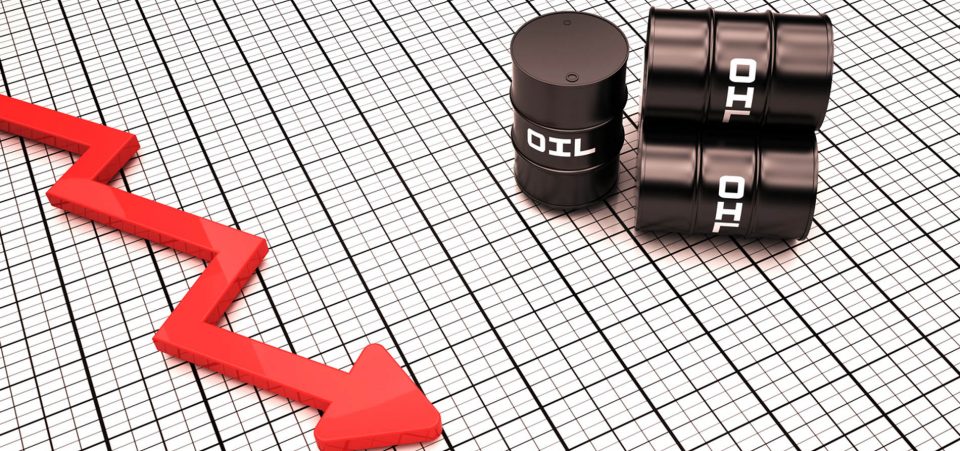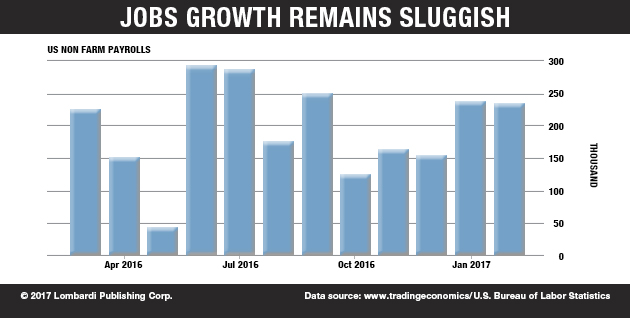Falling Oil Prices Is a Warning Sign to Investors of an Economic Collapse in 2017
Oil can’t seem to hold its price this year. Whenever it crosses the $50.00/barrel mark, it falls back a dollar or two. This might be good for drivers when they fill up at the pump, but it’s not a good sign for the economy. It’s a symptom of lack of demand, and thus, economic collapse in 2017 or 2018.
Not long ago, in the 1970s and 1980s, higher oil prices would drive up inflation and were seen as hampering growth. Then again, a few decades ago, oil production was concentrated in a handful of mostly North African and Middle Eastern countries. There were few alternatives to hydrocarbon energy resources then and the 20th century economic model was founded on the availability of cheap petroleum. It was used to fuel your car and make the plastic cups from which you drank.
But nowadays, there are credible alternatives to oil. Today, a low oil price doesn’t even produce the kinds of savings at the pump to make much difference. Most people around the world drive highly fuel-efficient vehicles. Electronics have produced great efficiency benefits. In turn, new mining and extracting methods have allowed oil companies to find more oil and get it out more cheaply.
Thus, overall demand has dropped, considering the increase in supply. In the 1970s, the idea of peak oil, or a limited supply of this resource, helped convince people that it was scarce. Scarcity meant those who controlled oil could charge whatever they wanted. All that has changed now. Peak oil has been replaced by “climate change” as the harbinger of energy/industry catastrophe. Thus, the only thing left as a tool to raise prices is a major increase in demand.
None of the world’s advanced economies have shown real growth. Stock markets are operating on an overdeveloped sense of optimism, which will soon end in a massive 1929- or 2008-style market collapse and financial crash. It will happen when bullish investors, who have been pumping the market caps of some truly questionable propositions (Snap Inc (NYSE:SNAP), anyone?) wake up and smell the bitter coffee. Just look at the U.S. jobs growth rate. It hasn’t recovered in a real sense, thus why should oil prices go up?
There are new tech, housing, and overall—personal and public—debt bubbles just waiting explode. Thus, falling oil prices reflect the fact that the real world works differently than the markets. It’s only a matter of time until the two catch up. Falling oil prices point to economic collapse.
Investors appear to be convinced the new dynamics of the oil price has not escaped their attention. There is a creepy nervousness that exudes from the markets. Probably none of the traders, and those who choose to invest in raw materials, received the adequate training to manage similar dynamics.
Last year, in August 2016, oil futures fell below $40.00 a barrel. The negative phase was supposed to have stopped after OPEC agreed to production cuts in the fall of 2016. Oil would hit $60.00 in 2017, they said. Well, so far it has not. More alarmingly, oil prices can barely hold on to $50.00/barrel before falling to the $47.00-48.00 range.
Oil Is Going Down, But What About Gold?
Some might say that gold hasn’t moved up much either. Gold, however, did make significant gains in the wake of Trump’s political crisis. The U.S. President’s trip abroad—to Saudi Arabia, Israel, Belgium, and Italy—has dampened the effects of the crisis, but there’s no telling where it could lead once he gets back to Washington. That said, a political crisis in the U.S. and a major terrorist attack in Europe are the kinds of events that used to push oil prices up.
Instead, oil prices are down. And the fact is, if oil prices did make a significant move, the overall ability of most middle-class Americans to sustain the increase is questionable. Adding $50.00-$100.00 more in gasoline/fuel expenses—let alone home gas etc.—would add much stress on families who are but a sudden car or home repair away from financial breakdown. And these are the families with members earning a middle-class income.
If the oil price drops sharply, it’s because the world economy is no longer safe. The lack of certainty about Trump’s fiscal and economic policies is fueling some nervousness. The impression is that the market no longer trusts the simple words of the American president who, on more than one occasion, promised a change of historical route and now claims a diametrically opposite one. The most obvious reason for lower oil prices is that the overall health of the world economy is at risk.







